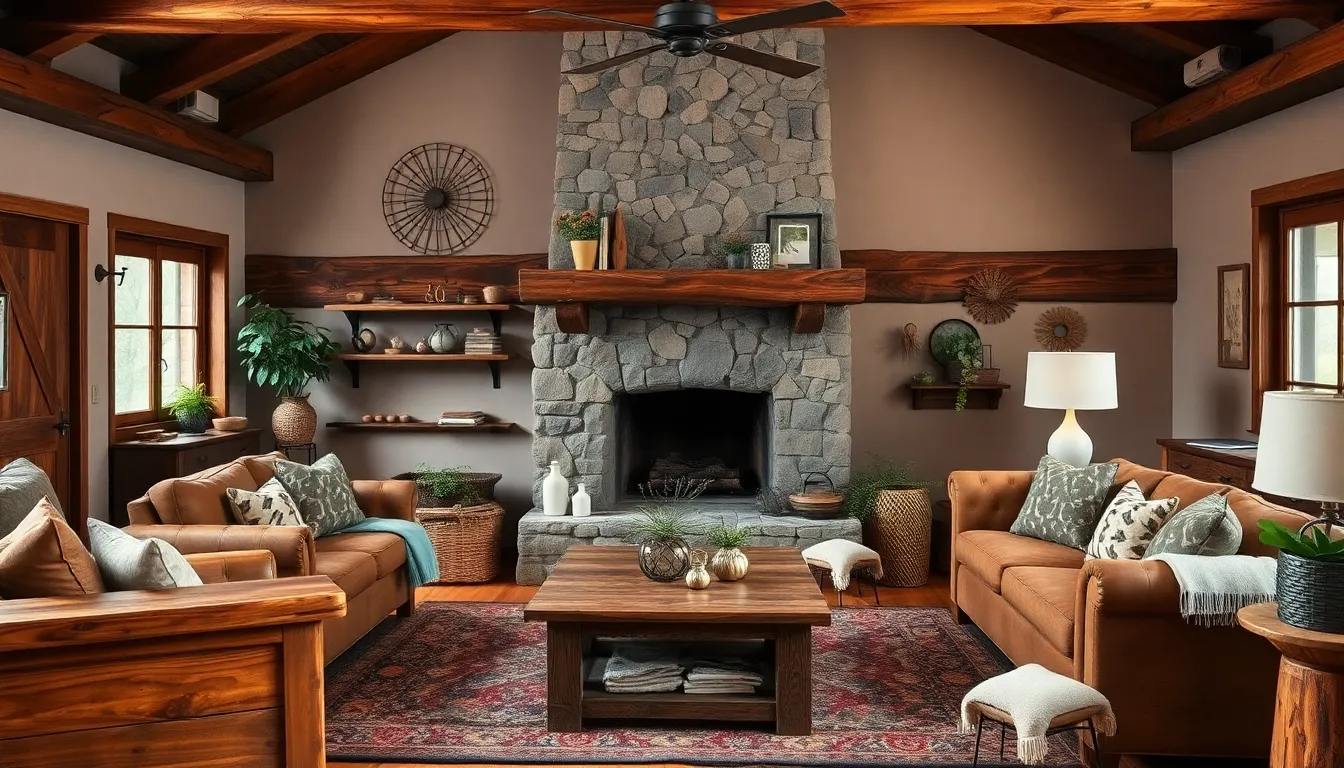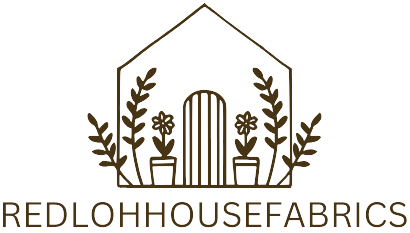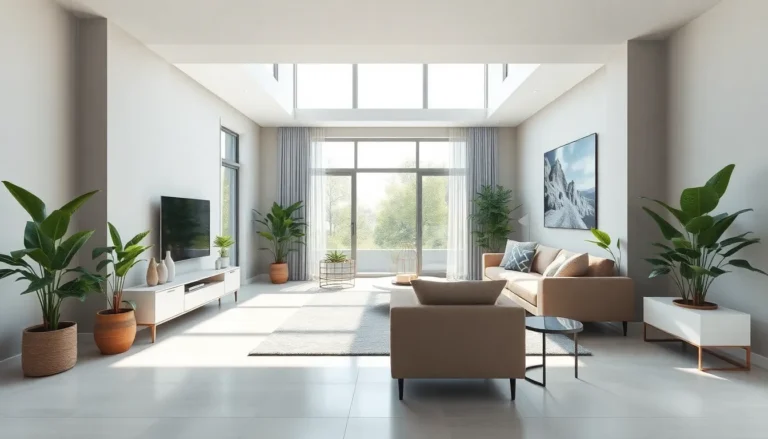Table of Contents
ToggleHome design trends are constantly evolving, reflecting changes in lifestyle, technology, and personal preferences. As people seek to create spaces that resonate with their individuality, new styles emerge, blending functionality with aesthetics. Today’s homeowners are more adventurous than ever, embracing unique designs that showcase their personality while enhancing comfort and functionality.
From sustainable materials to smart home technology, these trends offer innovative solutions for modern living. As the lines between indoor and outdoor spaces blur, homeowners are finding ways to bring nature inside, creating serene environments that promote well-being. Discovering the latest home design trends can inspire anyone to transform their living spaces into stylish sanctuaries that truly feel like home.
Overview of Home Design Trends
Home design trends evolve continually, influenced by lifestyle changes, technological advancements, and individual preferences. Homeowners embrace adventurous styles, incorporating unique designs that emphasize both aesthetics and functionality.
Key Trends
- Sustainability: Homeowners prioritize sustainable materials, emphasizing eco-friendly choices that reduce environmental impact. Reclaimed wood, bamboo, and recycled materials are becoming popular selections for flooring and furniture.
- Smart Home Technology: Integration of smart technology enhances convenience and efficiency. Devices like smart thermostats, lighting systems, and security cameras allow for remote control and automation, improving overall home management.
- Indoor-Outdoor Fusion: The trend of blending indoor and outdoor spaces fosters tranquility. Homeowners create seamless transitions through large sliding doors, wraparound porches, and expansive windows that invite natural light.
- Minimalist Aesthetics: Minimizing clutter plays a significant role in home design. Clean lines, neutral colors, and multi-functional furniture contribute to a serene atmosphere that emphasizes simplicity and elegance.
- Biophilic Design: Incorporating nature into home interiors promotes well-being. Features like living walls, indoor plants, and natural light enhance the connection to the outdoors, fostering a calming environment.
- Bold Colors and Patterns: While neutrals remain popular, bold colors and patterns are gaining traction. Homeowners experiment with vibrant accent walls, intricate tile designs, and statement furnishings to express personal style.
- Flexible Spaces: A shift towards versatile living spaces accommodates various activities. Home offices, gyms, and playrooms can easily transform based on daily needs, maximizing functionality without sacrificing aesthetics.
Popular Styles in Home Design

Home design styles continually evolve, reflecting contemporary preferences and lifestyles. Various styles blend aesthetics and functionality, offering homeowners diverse options for personal expression and comfort.
Modern Aesthetics
Modern aesthetics emphasize simplicity and sleek lines, characterized by open floor plans and functional furniture. Materials like glass, metal, and concrete create a polished look. Neutral color palettes, accented by bold art pieces or vibrant furniture, enhance visual interest. Educated choices about texture play a critical role, as fabrics like leather, linen, and wool introduce warmth and character.
Rustic Charm
Rustic charm embodies a cozy, inviting atmosphere, often featuring natural materials and vintage elements. Wood beams, reclaimed wood furniture, and stone accents contribute to a warm, lived-in feel. Earthy colors, along with patterns inspired by nature, enhance this style. Personal touches, such as handmade decor and antiques, foster uniqueness and warmth within rustic spaces. Rooms designed with comfort in mind promote relaxation and connection with nature.
Minimalist Approach
The minimalist approach emphasizes the principle of “less is more,” focusing on essential elements and decluttered spaces. Clean lines and a monochromatic color palette create tranquility. Furniture selections prioritize function and simplicity, often incorporating multi-use designs. Decorative elements remain minimal, promoting open, airy environments. Well-chosen accent pieces or plants offer warmth without sacrificing minimalist principles, reinforcing an organized, serene home atmosphere.
Color Palettes for 2023
This year, color palettes in home design reflect a harmonious blend of nature and bold expression. Homeowners embrace colors that evoke emotion and enhance overall ambiance.
Trending Colors
Trending colors for 2023 include warm earth tones, vibrant jewel tones, and soothing pastels.
- Warm Earth Tones: Shades like terracotta, olive green, and muted browns create inviting, grounded environments.
- Vibrant Jewel Tones: Colors such as emerald green, sapphire blue, and ruby red provide dramatic focal points, adding depth to spaces.
- Soothing Pastels: Soft hues like blush pink, lavender, and pale blue promote tranquility and enhance natural light in interiors.
Color Combinations
Effective color combinations elevate design aesthetics and mood.
- Earthy Neutral Palettes: Pairing sandy beige with olive green generates harmony and warmth.
- Bold Contrast: Combining deep navy with bright coral creates a striking visual effect, encouraging creativity.
- Pastel Layers: Blending soft yellow with pale blue fosters a serene atmosphere, ideal for bedrooms or relaxation areas.
These color trends offer exciting opportunities for personalized designs, allowing homeowners to create inviting and expressive living spaces.
Sustainable Home Design
Sustainable home design focuses on minimizing environmental impact while enhancing comfort and style. Homeowners increasingly seek solutions that align with eco-friendly practices.
Eco-Friendly Materials
Eco-friendly materials play a pivotal role in sustainable home design. Common choices include:
- Reclaimed Wood: Sourced from old structures, reclaimed wood reduces deforestation and adds character.
- Bamboo: Fast-growing and renewable, bamboo offers durability and versatility in flooring and finishes.
- Recycled Metal: Utilized for roofing and siding, recycled metal decreases waste and provides longevity.
- Low-VOC Paints: These paints release fewer volatile organic compounds, improving indoor air quality.
- Natural Fibers: Materials like cork and jute enhance interiors sustainably while also promoting comfort.
Choosing eco-friendly materials contributes to healthier living spaces and reflects conscientious consumerism.
Energy-Efficient Solutions
Energy-efficient solutions significantly impact sustainability in home design. Key strategies include:
- Solar Panels: Harnessing sunlight reduces reliance on fossil fuels, lowering energy costs.
- High-Performance Insulation: Proper insulation minimizes heat loss in winter and heat gain in summer, enhancing comfort.
- Energy-Efficient Windows: Double or triple-glazed windows reduce energy consumption by minimizing heat transfer.
- Smart Thermostats: Automated systems optimize heating and cooling, improving energy efficiency and reducing bills.
- LED Lighting: Long-lasting and energy-efficient, LED bulbs consume less energy than traditional lighting options.
Integrating these energy-efficient solutions leads to sustainable homes that lower impact on the planet while fostering a comfortable living environment.
Smart Home Innovations
Smart home innovations redefine convenience and efficiency in modern living environments. Homeowners increasingly rely on technology to enhance their daily routines, making their spaces more functional and enjoyable.
Automated Systems
Automated systems streamline household management by connecting various devices for seamless operation. Smart lighting systems enable users to control brightness and color through mobile apps or voice commands. Automated thermostats learn user preferences, optimizing heating and cooling schedules for energy savings. Security features, such as smart locks and surveillance cameras, provide remote monitoring and management, enhancing safety. Sensors for water leaks or smoke detection offer timely alerts, further ensuring peace of mind.
Integration of Technology
Integration of technology into home design enhances both functionality and aesthetic appeal. Smart speakers serve as central hubs, allowing users to control various connected devices with voice commands. High-definition home theaters deliver immersive entertainment experiences, with smart TVs offering streaming options and integration with other devices. The use of smart appliances, such as refrigerators and washers, makes everyday tasks more efficient by enabling remote operation and notifications. Overall, integrating technology fosters an environment where comfort and control coexist, making homes more responsive to personal needs.
Home design trends are continually evolving to reflect the dynamic nature of modern living. As homeowners seek to create spaces that are both functional and aesthetically pleasing, the emphasis on sustainability and technology will only grow stronger. Blending indoor and outdoor environments fosters a sense of tranquility while bold colors and minimalist designs allow for personal expression.
These trends not only enhance the beauty of a home but also promote a healthier lifestyle through eco-friendly materials and smart innovations. As individuals embrace these new ideas, their living spaces become more than just places to reside; they transform into personalized sanctuaries that resonate with their unique identities. The future of home design promises exciting possibilities for those ready to embrace change.


